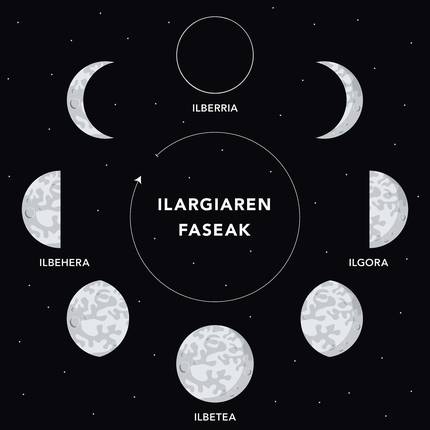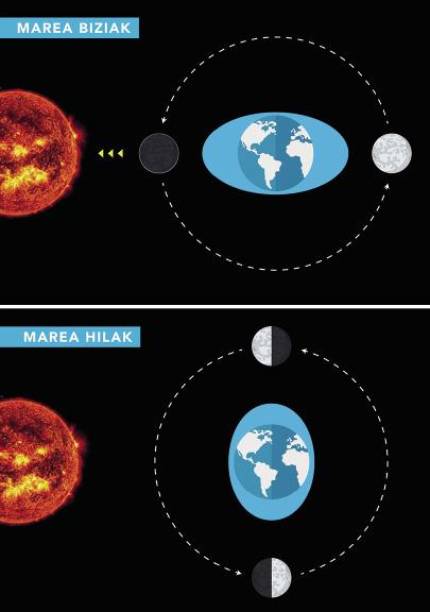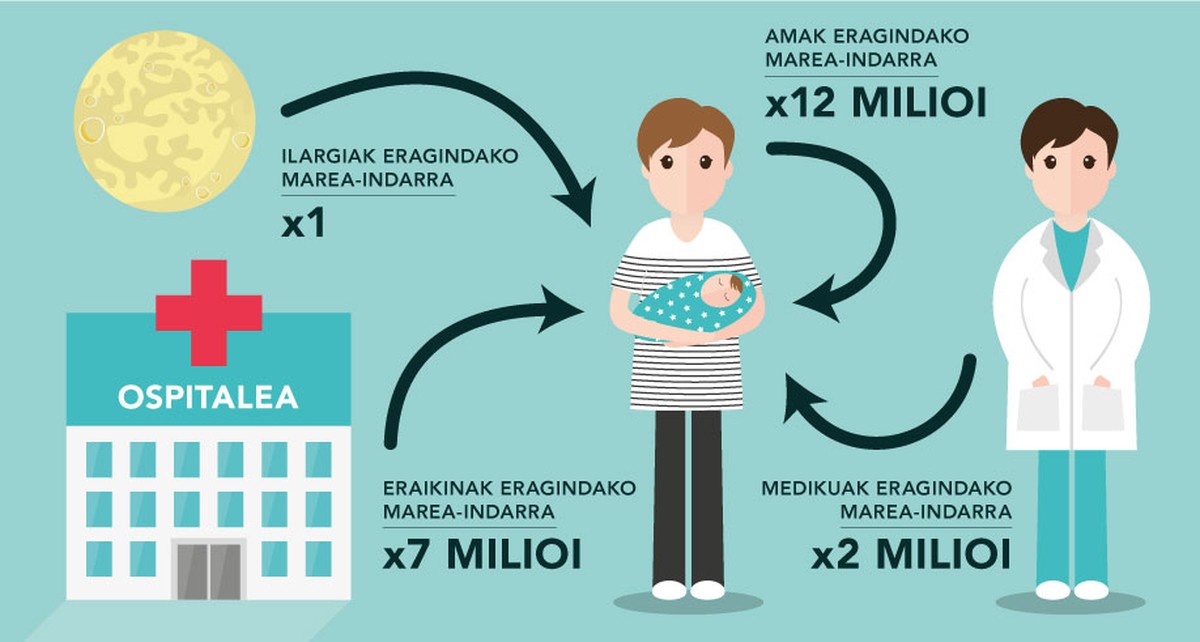The Moon and human behavior: does corrupt believe?

It is known that the gravitational force of attraction of the Moon, together with that of the Sun, causes the fold and the low tide. This evidence, along with other facts and beliefs of nature associated with the concrete phases of the Moon, hinder the separation between science and fiction. We will then try to differentiate reality from prejudices and convictions, based on research on the subject. Let us begin by observing the behavioral changes that occur in the beings of our environment in relation to the Moon.
The strength and light of the tides
Tides have led to evolution to synchronize with the Moon the reproductive behavior of some marine animals. Sea turtles take advantage of the full moon or the pleamar of the new moon to spawn the eggs in the sand, where until the next fold will not be waters. For hedgehogs and squids fertilization begins with the intensity of full moon light. It also releases eggs and sperm when it detects a characteristic celestial color that only adapts to the sunset after the full moon of November. However, these latter are not the only beings acting in one way or another depending on the light of the Moon.

Moving from sea to land, according to a study at Tanzania's Mikumi National Park, during full moon nights, elephants avoid attacking human plantations. Elephants are catemeral animals, which are dedicated both day and night, and come to crop plantations for food especially on low light nights to prevent farmers from seeing them [2]. Lions in southern Tanzania also take advantage of darkness to attack humans. Of the 450 attacks that occurred between 1988 and 2009, most occurred in the sunsets of the 10 days following the Full Moon, in the long interval between sunset and moonrise [3]. Thus, all these behaviors are adaptations under the high tide caused by the Moon or the light reflected by the Moon, and therefore the behaviors developed to ensure their survival. However, they do not indicate the direct effect of the satellite on animals.
Ancient Pliny Theory

In the first century after Christ, the Roman writer, known as Pliny the Elder, suggested: If the force of the Moon could scourge the sea, it was also allowed to alter the liquids of the human organism. Following this theory, in 1978, psychiatrist Arnold Lieber suggested that the Moon, through the force of tides, could displace our brain water molecules. In this way, the star wanted to show his influence on human behavior, since Lieber himself discovered in an investigation carried out in the region of Dade, in Florida, that the human being was more likely to commit murders and attacks. Astronomer George Abell was the first to question this theory and focused his argument on three natural phenomena: on the one hand, the force of the Moon's gravity affects only open water structures such as oceans and lakes, and not covered and closed structures such as the brain. On the other hand, if the Full Moon influenced, the New Moon should have the same or greater influence, since in this phase the Moon aligns with the Sun and adds the gravity force of both (see figure 3). Finally, although the Moon is large, it is far from the human being and can have no more influence than an insect lying on the shoulder. Along the same lines, Kelly and his companions compared the gravitational force exerted on the baby by the bodies surrounding a newborn with that of the Moon (see Figure 4) and concluded that the influence of the star was banal [4].
The moon and fog, an environment for witches
Is there no basis then for the link Lieber found between the murders and the full moon? Although it did not succeed in proposing the force of tides as a cause, other studies have confirmed the increased risk of aggressive attacks on the moon. For example, the study of the 23,127 crimes received over six years in various police stations in the German region of Bavaria concluded that in the middle of the moon and on the waning moon there were more serious attacks on the street. Several factors have been proposed about the cause of this phenomenon. First of all, it should be noted that although the Moon itself does not affect us directly, when it is full it reflects more light, which prevents humans from producing melatonin. Melatonin is a hormone that controls the sleep cycle, occurs when our retinas do not receive light and produces sleep. On bright nights, however, the cycle can be interrupted causing lack of sleep and aggressive behaviors. In addition, increased brightness increases visibility, which helps commit crimes. On the other hand, cultural beliefs can make the offender think that he is affected by a full moon and encourage him to commit the crime. Finally, due to the luminosity that occurs in the Full Moon and in the next nights, it is more common to perform night leisure activities and walk in the street in small hours, so statistically there are more possibilities to attack or suffer [5].

Full Moon and Health
It has been considered that the Moon can influence the health of human beings and various research has been carried out. Beginning with psychiatric disorders, research has found no significant effects of the lunar phases on panic attacks in emergency services or worsening symptoms of anxiety and depression, or suicide attempts [6]. Despite studies on epilepsy seizures, the results do not coincide in the lunar phase in which more seizures occur [7]. According to a study conducted by the University of Glasgow, full moon days were more cases in which, despite heart symptoms, the biological origin of the disease was not found in diagnostic tests [8]. To explain this phenomenon, the authors of the research propose that, in the absence of biological explanations, the social belief built around the Moon could have to do.
When beliefs are considered certain
The importance of the mind to certain facts and its fixation on memory is called imaginary correlation. In other words, it is about perceiving a bond that does not exist in reality as if it were real. If we have a full moon and something out of the ordinary, we will remember, count and extend that unusual detail, because it coincides with our prejudices on the Moon. For example, according to one study, psychiatric service nurses who believed that the Moon influenced the mood of patients wrote more notes about strange behaviors of patients when it was full moon, compared to nurses who did not believe in the influence of the Moon [9].
But there is also a theory about the possible influence of the Moon on human behavior: According to Emory University psychiatrist Charles Raison, what today is an old myth could be a reality at the time of its creation. In fact, when there was no artificial light and the human being slept under the sky, the brightness of the Moon slowed people's sleep, including mental disorders. When lack of sleep coincides with certain psychological conditions, such as bipolar disorder, behavioral alterations may occur. Therefore, it is possible that this connection of the ancestors exceeds the centuries and, according to Raison and his companions, it can be considered as “cultural fossil” the belief on the effect of the Moon on humans.
Bibliography
Work presented to the CAF-Elhuyar awards.
Buletina
Bidali zure helbide elektronikoa eta jaso asteroko buletina zure sarrera-ontzian











